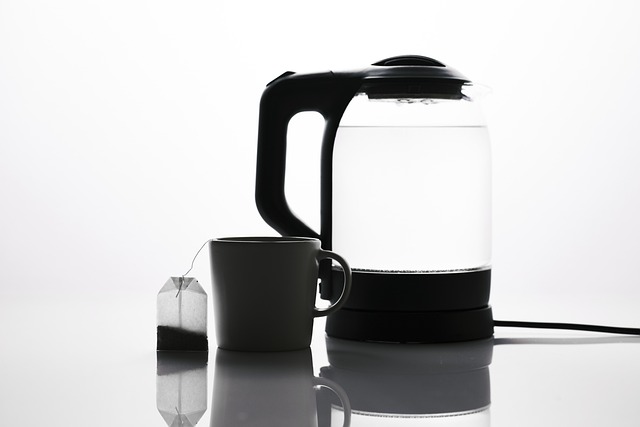Contents
Stainless Steel vs Rust: Examining the Vulnerability of Kettles
Stainless steel has long been considered a reliable and durable material for many household appliances, including kettles. However, despite its resistance to corrosion, stainless steel kettles are not completely immune to the formation of rust over time.
Rust, scientifically known as iron oxide, is a reddish-brown oxide formed when iron reacts with oxygen and moisture. It can compromise the structural integrity and aesthetics of metal objects, making it important to understand the vulnerability of stainless steel kettles to rust.
Stainless steel kettles are primarily made from a combination of iron, chromium, nickel, and other alloying elements. The added chromium forms a protective layer on the surface of the steel, known as a passive film, which prevents the iron within from coming into contact with oxygen and moisture.
This passive film acts as a barrier, inhibiting the oxidation process and corrosion of the stainless steel. However, if the passive film is damaged or depleted, the iron within the stainless steel can be exposed to its surroundings, leading to the potential formation of rust.
Several factors can contribute to the vulnerability of stainless steel kettles to rust. Exposure to saltwater, acidic substances, or harsh cleaning agents can damage the passive film, making the kettle more susceptible to corrosion. Scratches or physical damage to the surface can also compromise the protective layer and increase the risk of rust formation.
It is important to note that proper maintenance and care can significantly extend the lifespan of stainless steel kettles and minimize the risk of rust. Regularly cleaning the kettle with gentle, non-abrasive cleaners and drying it thoroughly after use can help preserve the integrity of the passive film.
In conclusion, while stainless steel kettles offer a higher resistance to rust compared to other metals, they are not completely impervious to corrosion. Understanding the factors that can contribute to the vulnerability of stainless steel kettles to rust is crucial in prolonging their lifespan and ensuring their optimal performance.
Stainless Steel vs Rust: Examining the Vulnerability of Kettles
The Importance of Choosing the Right Material for Kettles
Kettles have become an essential kitchen appliance, allowing us to quickly boil water for various purposes. One crucial aspect to consider when purchasing a kettle is the material it is made of. Stainless steel and rust are two common concerns among consumers. In this blog post, we will examine the vulnerability of kettles to rust and the benefits of choosing stainless steel.
Understanding Rust and Its Effects on Kettles
Rust is a chemical reaction that occurs when iron or steel comes into contact with moisture and oxygen. It is a common problem for many kitchen appliances, including kettles. Rust not only affects the appearance of the kettle but can also impact its performance and safety.
When rust forms on the interior of a kettle, it can contaminate the water, altering its taste and quality. Additionally, rust particles may mix with the boiled water and end up in our beverages, potentially posing health risks. Furthermore, rust weakens the structure of the kettle, making it more prone to leaks and damage.
The Advantages of Stainless Steel Kettles
Stainless steel is a popular material choice for kettles due to its numerous advantages:
- Corrosion Resistance: Unlike iron or regular steel, stainless steel is highly resistant to rust, making it a durable and long-lasting option for kettles.
- Hygienic and Safe: Stainless steel is non-reactive, meaning it does not release harmful chemicals when exposed to heat or acidic substances. This property ensures that the boiled water remains pure and safe for consumption.
- Easy Maintenance: Stainless steel kettles are relatively easy to clean and maintain. They do not require special cleaning agents and are resistant to stains, allowing for hassle-free maintenance.
- Sleek Appearance: Stainless steel kettles often have an attractive and modern design that can complement any kitchen decor.
Considering these benefits, investing in a stainless steel kettle is a wise choice for those seeking a reliable and rust-resistant option.
Conclusion
Choosing the right material for your kettle is crucial to ensure its performance, safety, and longevity. In the battle between stainless steel and rust, stainless steel emerges as the clear winner. Its corrosion resistance, hygienic properties, ease of maintenance, and appealing appearance make it an ideal choice for consumers.
Frequently Asked Questions
1. Why is stainless steel popular for making kettles?
Stainless steel is popular for making kettles because it is highly resistant to rust and corrosion. This makes it a durable and long-lasting material for kitchen appliances like kettles.
2. Can stainless steel kettles rust?
While stainless steel is highly resistant to rust, it is not entirely immune. In certain conditions, stainless steel kettles can develop rust spots, but this is generally rare. With proper care and maintenance, stainless steel kettles can stay rust-free for a long time.
3. How can I prevent my stainless steel kettle from rusting?
To prevent your stainless steel kettle from rusting, it is important to follow these guidelines:
- After each use, thoroughly clean and dry the kettle to remove any moisture that could lead to rust formation.
- Avoid using abrasive cleaners or steel wool on the stainless steel surface, as it can scratch the surface and create entry points for rust.
- Regularly inspect the kettle for any signs of rust or damage and address them promptly.
- Store the kettle in a dry place when not in use.
4. Are stainless steel kettles better than other materials in terms of rust resistance?
Yes, stainless steel kettles are generally better than other materials when it comes to rust resistance. Materials like iron or copper are more susceptible to rust, whereas stainless steel provides a higher level of protection against corrosion.
5. What should I do if my stainless steel kettle develops rust?
If your stainless steel kettle develops rust, you can try the following steps to remove it:
- Create a mixture of vinegar and water. Use a 1:1 ratio.
- Apply the mixture to the rusted area and let it sit for a few minutes.
- Use a soft sponge or cloth to scrub the rusted area gently.
- Rinse the kettle thoroughly with water and dry it completely.
The Possibility of Rusting in Stainless Steel Kettles
Understanding Stainless Steel
Stainless steel is a type of metal alloy that contains iron, chromium, and other elements that provide resistance to corrosion. It is commonly used in many household appliances, including kettles.
Factors Influencing Rust in Stainless Steel Kettles
While stainless steel is generally corrosion-resistant, there are some factors that can contribute to the formation of rust in stainless steel kettles. It’s important to be aware of these factors to ensure the longevity of your kettle:
- Quality of Stainless Steel: The quality of the stainless steel used in the kettle plays a significant role in its resistance to rust. Higher-grade stainless steel, such as 316 or 304, is more resistant to corrosion compared to lower-grade stainless steel.
- Maintenance: Proper care and maintenance of your stainless steel kettle can prevent rusting. Make sure to clean it regularly, avoiding abrasive cleaners or utensils that may scratch the surface. Always dry the kettle thoroughly after use to prevent the formation of moisture spots.
- Water Quality: The mineral content in water can vary depending on your location. Water with high levels of chloride, iron, or other corrosive elements may accelerate rusting in stainless steel kettles. Using filtered or distilled water can reduce the risk of rust formation.
- Heat Exposure: Extreme heat can also affect the corrosion resistance of stainless steel. Avoid exposing your kettle to high temperatures for a prolonged period, as it may weaken the protective layer on the surface and make it more susceptible to rust.
By taking these factors into consideration, you can minimize the likelihood of rust formation in your stainless steel kettle and increase its lifespan.
If you’d like to learn more about stainless steel or its various grades, feel free to visit the Wikipedia page on stainless steel.
Stainless Steel vs Rust: Examining the Vulnerability of Kettles
Summary:
- Stainless steel kettles are resistant to rust, making them a durable choice.
- Rust is a common issue in traditional kettles made from materials like iron or copper.
- Exposure to water, moisture, and acidic substances can accelerate rust formation.
- Stainless steel is highly resistant to rust due to its chromium oxide layer.
- Regular cleaning and proper maintenance can further enhance the lifespan of stainless steel kettles.


































